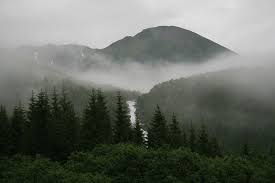
by Bill Schlesinger
(Coauthor of this guest blog, Charles Cannon is Director of the Center for Tree Science at the Morton Arboretum, Lisle, Illinois.)
Ecologists and conservation biologists often characterize biodiversity as the number of species found per unit area of the Earth’s surface, often in hectares or square kilometers. Our bipedal outlook on nature aligns well with this perspective and the laws and policies we create to protect and manage land. An abundant scientific literature shows that species richness is related to the area of habitat—what ecologists call species-area curves.
But as early as 1967, Eric Pianka noted that for lizards in the southwestern U.S, the maximum number of species was associated with the height of the vegetation. In other words, a third dimension of habitat contributed to the richness of species present. Subsequent work has suggested that this pertains to all species with arboreal habits—squirrels, birds, lizards, insects, epiphytes and the like. Canopy volume matters.
Now that we have satellites that are capable of measuring canopy height, conservation biologists can classify habitat value by volume as well as area. See: Global Forest Canopy Height 2019 (earthengine.app). A forest with a 25-meter canopy in the Great Smoky Mountains National Park has five times more habitat volume than a loblolly pine forest with a 5-meter canopy on the North Carolina Piedmont. With reports of 1,180 hectares of deforestation in the Amazon during the month of May 2021, the impact on species diversity and habitat complexity goes well beyond the loss in forest area alone.
At 35-m height, temperate rainforests in the coast ranges of Washington and similar-statured forests in the Brazilian Amazon have huge habitat volume. Moreover, the canopies of these tall-statured forests contain an enormous structural complexity of branches and leaves, particularly in areas with high tree species richness. Old-growth forests, with the slow build-up of multiple levels of understory and epiphytic plants over many years, support numerous specialized arboreal species. Even if they are replanted after harvest, canopy stature and species richness take time to develop, requiring many decades before the original habitat volume is restored. Many species that are canopy specialists are likely to have gone locally extinct in the meantime. Using LiDAR remote sensing, one study in Borneo found 52% lower canopy volume in logged forests than in old-growth, after more than a decade of regrowth.
Canopy volume plays a role in many different aspects of forest biology. Fundamentally, trees create their own microclimate in the forest understory. On the outer surface, the leaves directly capture solar radiation and the loss of water vapor from canopy leaves and shading in the understory greatly lower temperature while raising humidity and reducing wind movement. These conditions greatly enhance the habitat quality for specialized species.
The abundance of above ground woody biomass contributes substantially to carbon storage in trees. Finally, forests also modify larger weather cycles; In the Amazon approximately half of the rainfall in newly established agricultural areas is supplied by nearby forests in protected areas. Globally, plant transpiration is highest in tropical rainforests and lower in areas of lower stature vegetation.
While grasslands, tundra, and desert habitats certainly contribute substantially to global species diversity, these vegetation types are largely two-dimensional, again matching our limited view of the world. The shape and volume—not just area—of trees growing in a forest creates an added dimension to the ecological and evolutionary setting. The increasing complexity of this structure through time provides a rich environment for diversification and specialization. Forests matter.
References:
Butler R. 2021. May deforestation in the Amazon hits 14-year high, with 4 days of data still to process. https://news.mongabay.com/
Ehbrecht, M., D. Seidel, P. Annighöfer, H. Kreft, M. Köhler, D.C. Zemp, K. Puettmann, R. Nilus, F. Babweteera, K. Willim, et al. 2021. Global patterns and climatic controls of forest structural complexity. Nature Communications 12: 519.
Lang, N., N. Kalischeka, J. Armstonb, K. Schindlera, R. Dubayahb, J. D. Wegnera. 2021. Global canopy height estimation with GEDI LIDAR waveforms and Bayesian deep learning | DeepAI2020GL091380
Midodowski, D.T. and 11 others. 2021. The impact of logging on vertical canopy structure across a gradient of tropical forest degradation intensity in Borneo. Journal of Applied Ecology doi: 10.1111/1365-2664.13895.
Mu, Y., T.W. Biggs, and F. De Sales. 2020. Forests mitigate drought in an agricultural region of the Brazilian Amazon: Atmospheric moisture tracking to identify critical source areas. Geophysical Research Letters doi: 10.1029/2020GL091380
Pianka, E. 1967. On lizard species diversity: North American flatland deserts. Ecology 48: 333-351.
Schlesinger, W.H. and S. Jasechko. 2014. Transpiration in the global water cycle. Agricultural and Forest Meteorology 189/190: 115-117.
Walter, J.A., A.E.L. Stovall and J.W. Atkins. 2021. Vegetation structural complexity and biodiversity in the Great Smoky Mountains. Ecosphere https://doi.org/10.1002/ecs2.